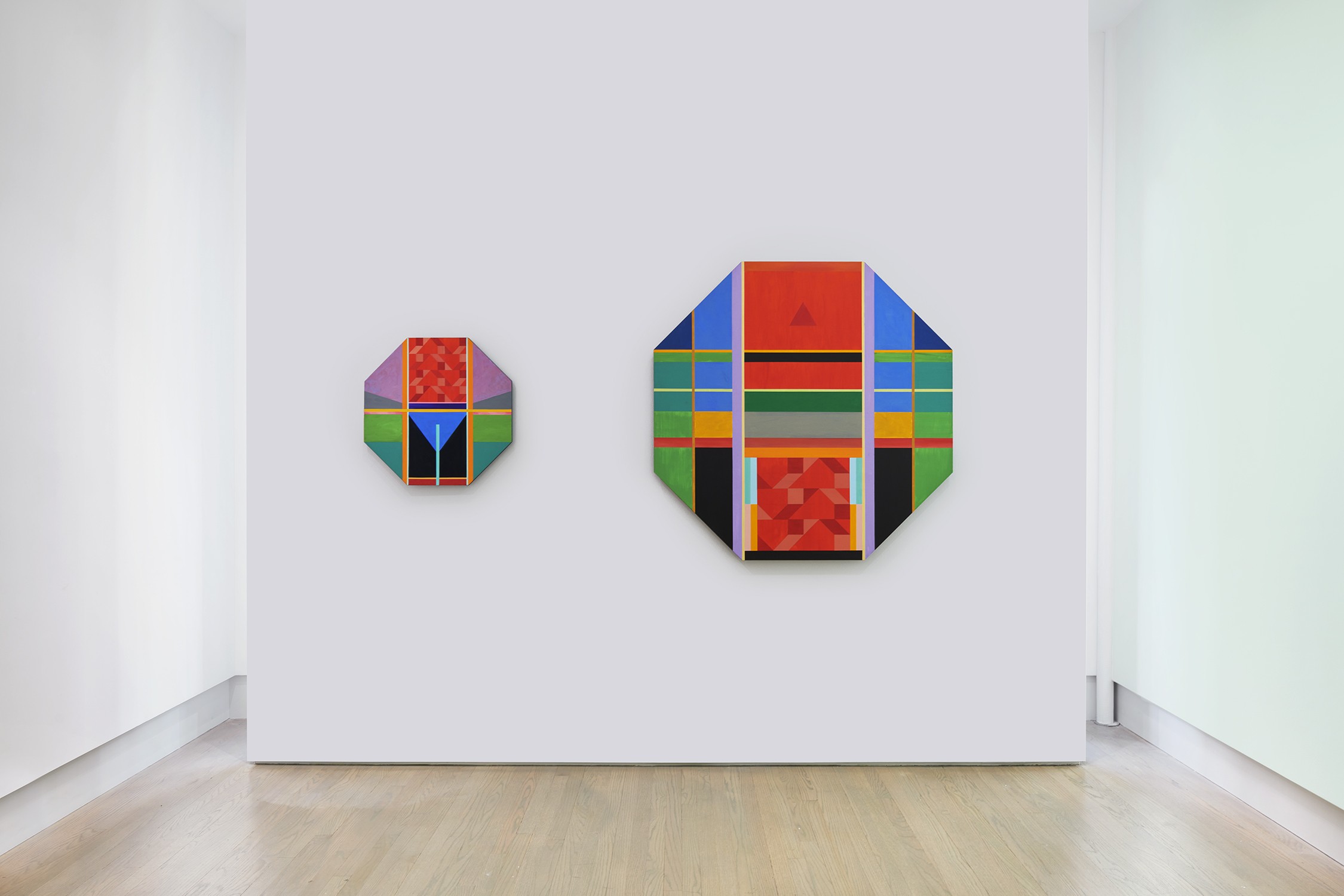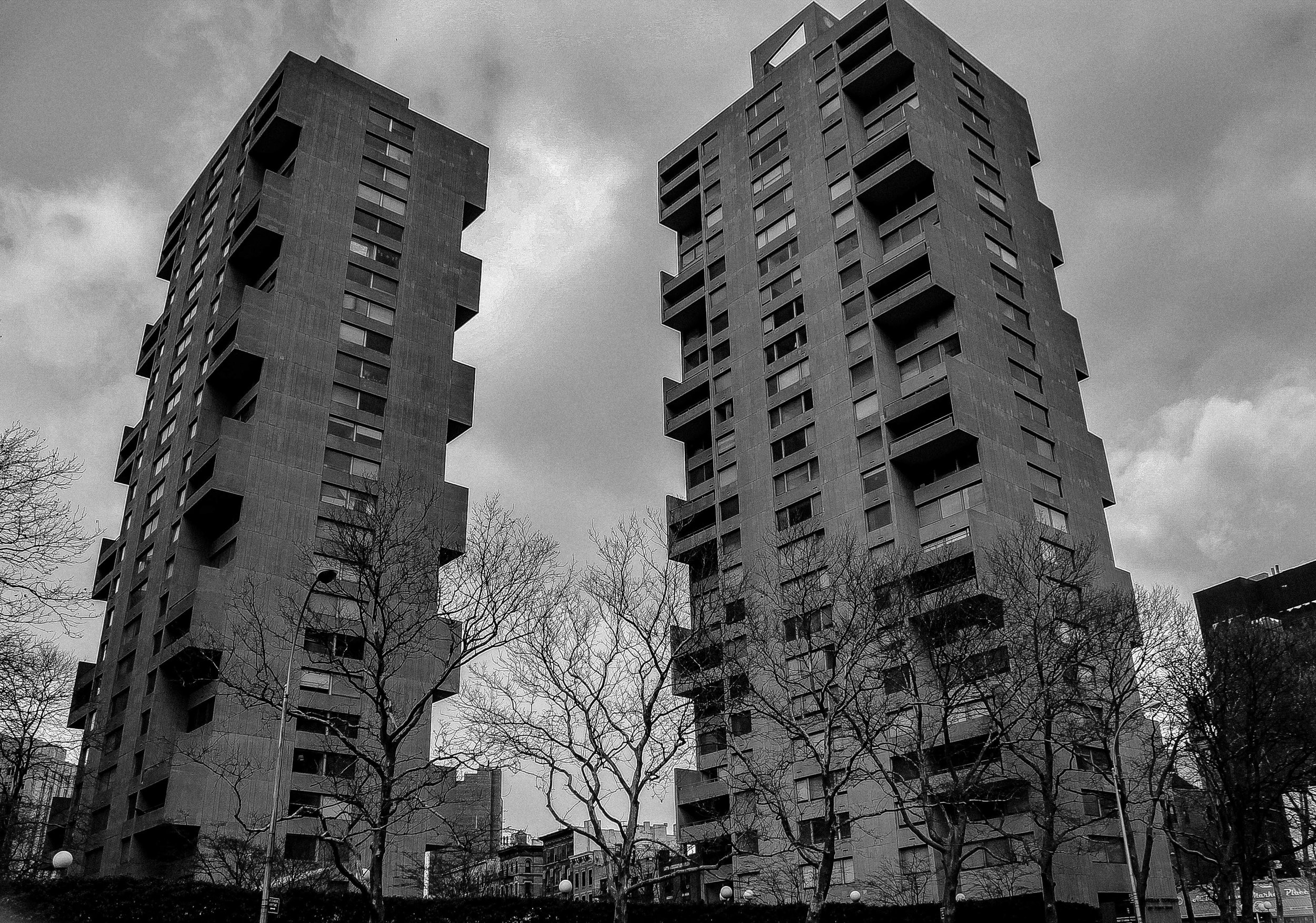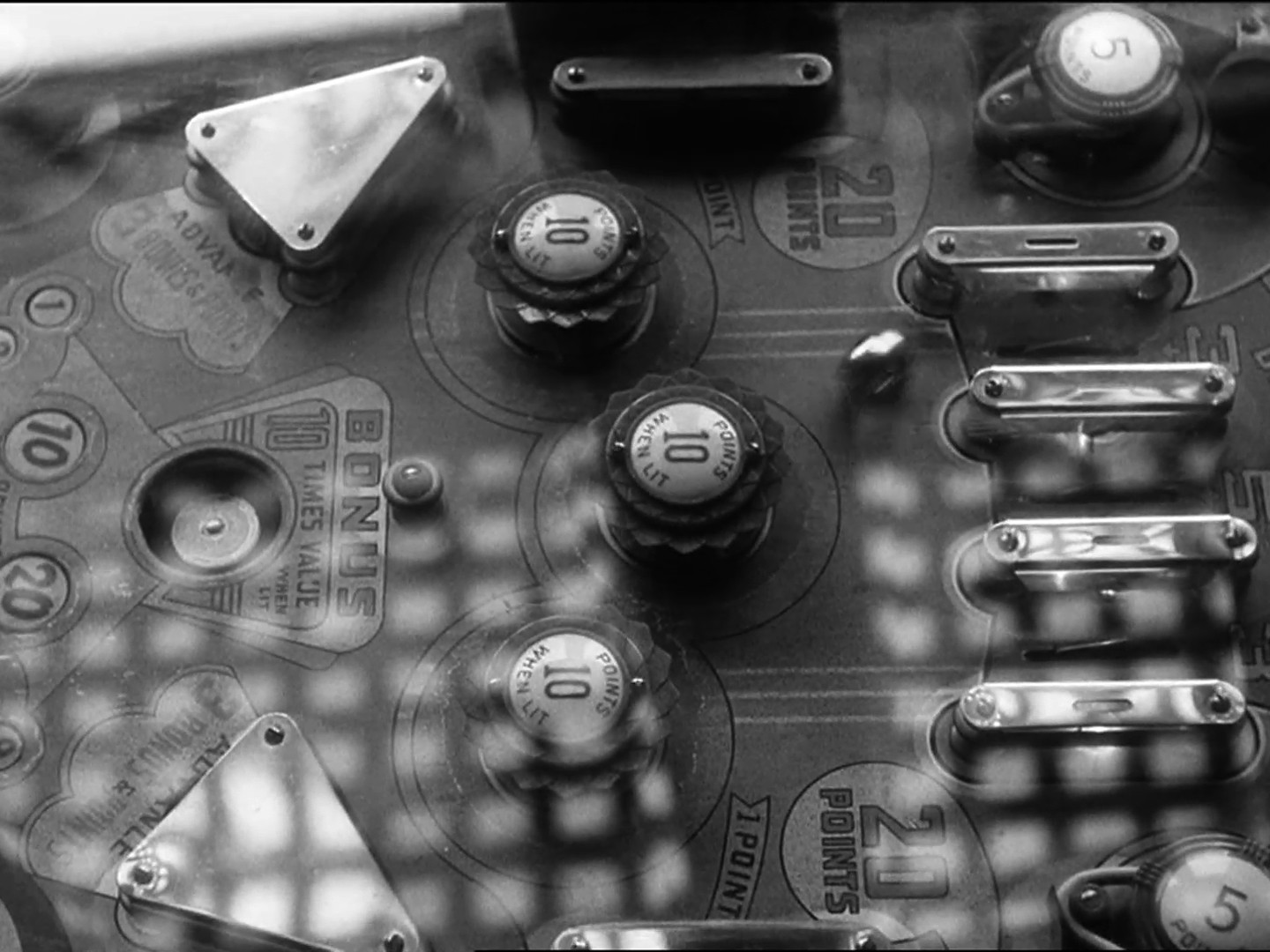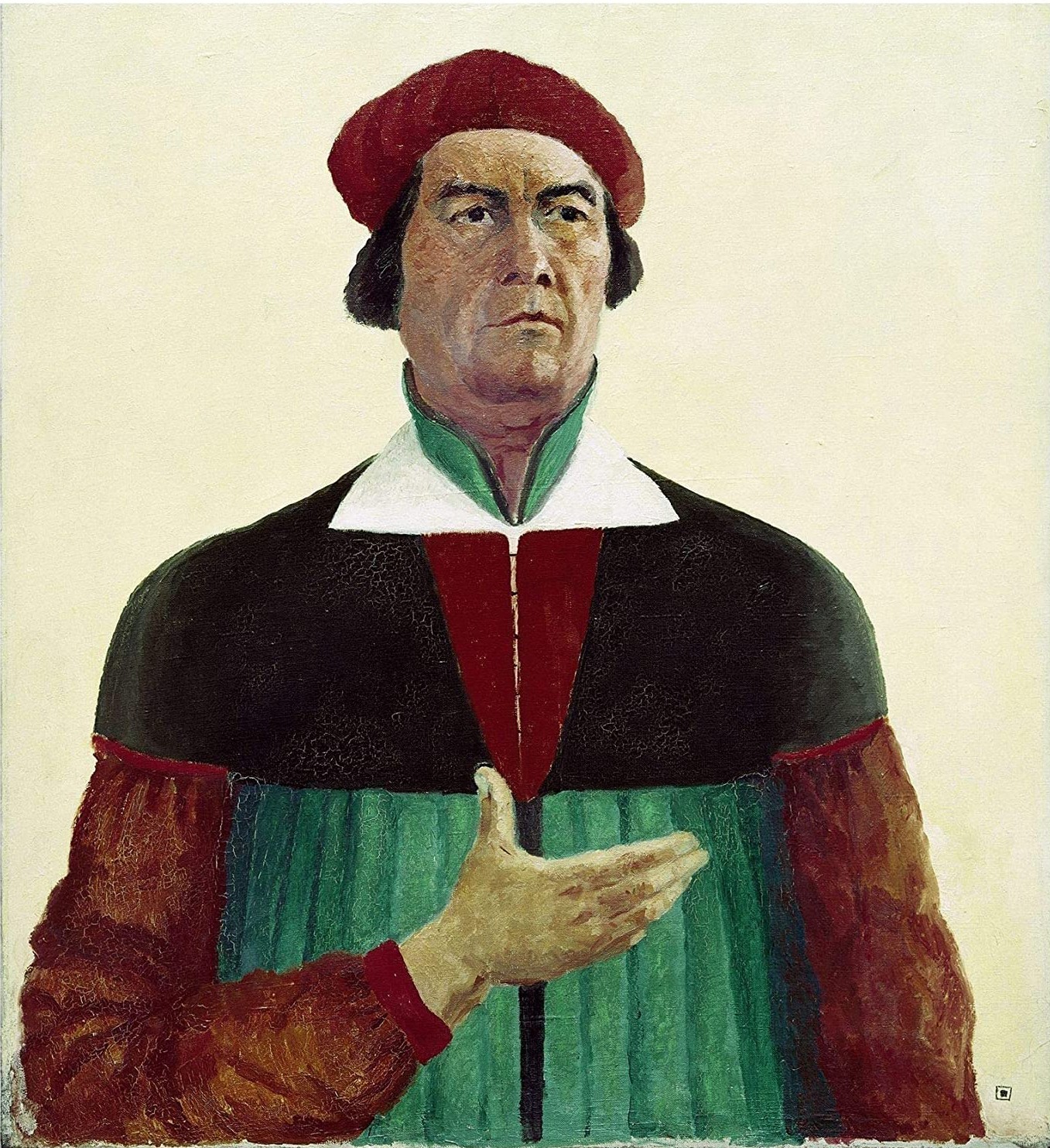"Geography is destiny":
Anton Ginzburg in conversation with Keith Sanborn
 Installation view at Helwaser Gallery. Paintings 'Tivoli" and "Hotel of Strangers"
Installation view at Helwaser Gallery. Paintings 'Tivoli" and "Hotel of Strangers"
https://helwasergallery.com/viewing_room/in-conversation-anton-ginzburg-with-keith-sanborn/
Introduction:
Pandemic confinement gave artist Anton Ginzburg the chance to observe the high modernist architecture of downtown Manhattan in an unusual light. Framed through the large windows of his apartment, located at the end of the Bowery, the acute angles and geometries of Brutalist buildings and high-rise towers became the subject of Ginzburg’s latest body of paintings. Entitled Translucent Concrete, the series serves as an abstract record of Ginzburg’s impressions of interior and exterior scenes that he observed during the time spent indoors, or on walks through the deserted neighborhood. In this interview, presented on the occasion of Ginzburg’s second solo exhibition with the gallery, Ginzburg speaks with artist, theorist, and translator Keith Sanborn. For Ginzburg, French writer Ivan Chtchetglov’s manifesto “Formulary for a New Urbanism” was an intellectual influence. Published by the avant-garde movement Situationist International, which was active between the 1950s and 1970s, Chtcheglov was concerned with concepts of how human affect could interact with the urban dimension of the city. Sanborn and Ginzburg discuss the links between this latest series of paintings with the ideals of the Situationist International and reflect on the changing realities of urban living today. (by Junni Chen)
Keith Sanborn: Your newest works bear connections with some of the earliest interests of the Situationist International. In particular, they emphasized the relationship of people to the urban milieu, and what they called psychogeography. The pandemic has caused a radical alteration in this relationship.
Anton Ginzburg: Staying at home during a pandemic made me think about my immediate environment and the modernist architecture I was surrounded by. The building I currently live in is Chatham Tower in downtown New York, a brutalist tower built in 1969. That era was characterized by the threat of the nuclear war with the Soviet Union during the Cold War — the proportions, tectonics, and aesthetic choices remind me of a massive bomb shelter. Staying quarantined indoors, I turned to reading the manifesto published by the Situationist International, entitled “Formulary for a New Urbanism, 1959”, which had been written by Ivan Chtcheglov. I found some interesting coincidences; when he writes about modernist architecture (for example, Le Corbusier buildings), he states that they arouse in him the idea of immediate suicide. That is, that the last remnants of joy were destroyed. And as it happens, I live right across the street from the prison where Jeffrey Epstein recently committed suicide.
 Chatham Towers in New York City, built in 1964 by architects Kelly and Gruzen
Chatham Towers in New York City, built in 1964 by architects Kelly and Gruzen
KS: In a short essay entitled “Introduction to the Continent Contrascarpe,” Chtcheglov says, “Once economic problems are resolved, geography is destiny.” He offers this image: “Our adventures resemble the magnetized balls of pinball machines with unaccountable trajectories, which are nonetheless, calculable.” A metaphor he relates to Debord’s unrealized project for a kind of psycho-geographical pinball machine based on a time of day and a place in Saint-Germain-des-Pres. Chtcheglov’s key insight is about the relationship between individual subjectivity, the social, and the architectural determinants of consciousness. One could take the octagonal shape of your paintings as a given, like urban space. One doesn’t have to be so strict about the analogy, but color and the forms within the octagon function as a kind of expression of calculated subjectivity in response to that given.
AG: For me, the octagon shape of the paintings can work on two levels: it can represent a modernist tondo, or an architectural detail. It has the stability of the square and reference to the window and the diamond shape's dynamism. The shape of the paintings emphasize modularity and also set a grid that my compositions interact with, while the colors introduce the subjectivity, premise of space and emotional affect.
KS: Your reference to the tondo is singularly apposite, as the tondo often appears in an architectural setting. The paintings could also be thought of as maps, but they’re not maps of geographical locations. They might be thought of as maps of psychic locations, or psychological locations. They are mental maps. We have the possibility of either looking down from above or looking directly at them. They suggest an illusion of perspective space, but they could also be taken as flat architectural elevations or overhead views. And again, Chtcheglov enters the picture with the collages of maps he and Debord were making around the same time he was writing “Formulary.”
Whenever I see an octagon, I see a stop sign, though, in a gallery space, that effect might be mitigated. Nonetheless, the octagon is a constraint. And within it, you have inscribed triangles as well as squares. These function as acts of resistance, or at least a strategic response to the constraint of the octagon.
 Guy Debord’s 'Crititique of Separation’, 1961 (film still)
Guy Debord’s 'Crititique of Separation’, 1961 (film still)
AG: I used a Constructivist pattern here that I believe was designed by Liubov Popova. The paintings are structured, so there is a relationship between the interior and exterior. I think of the central parts of the work as representing interior spaces or inner states. The side panels along the outer edges describe outdoor spaces and architectural facades. Besides the rhythm it creates in the painting, the pattern also serves as a floor's flat surface, challenging the figure-ground relationship.
KS: In one of the still-extant fragment of a novel that Chtcheglov wrote, he remarked that “the search of the man towards the center is easy; that of the couple towards the periphery is not.”
He was speaking about a romantic, medieval quest. But that relationship between interior and exterior space, and the traversing of space from the exterior to the interior—the outward dynamism towards the edges. I think that's an interesting observation, both in terms of the compositions of these paintings, as you're talking about them and in their effect, their psychogeography. This tension between center and edge, romance and adventure, surfaces again in your video, Constructivist Drift.
AG: I would also connect it to the time aspect of the artwork. While the duration is more apparent in the video, it is also an essential factor for the painting. How a painting is experienced, its immediacy, density aligns with what you mentioned earlier about it being a mental map.
KS: Well, I thought it was interesting, for several reasons. The relationship to the architecture surrounding you is the main thing, but the woman in it evokes a romantic quest or at least a reality that is related both to buildings and to persons.
Ivan Chtcheglov, detouring Freud, summarized a great deal by saying, “geography is destiny.” In his case, this formulation summarized a failed attempt to view a particular landscape. He and a woman, his lover, were in the south of France, and they wanted to travel to a particular place to see a location that had appeared in a film. They were told at their hotel, that no cars were available to rent. So, she went to the movies instead of herself. He went to the train station to try to rent a car, and it turned out the cars were available. But it was too late. The moment was lost. For Chtcheglov, misinformation and geography combined to create a disconnect. And the inability to complete that journey together led to the falling apart of the relationship. The psychogeography of the movement through urban space is also part of a chance encounter.
AG: Well, I think the chance encounter is a good way to describe it. The scene with a woman in Constructivist Drift emphasizes the disconnect of the urban environment. She is speaking to a camera, but the voice gets drowned in the city's noise. The footage that is projected onto the wall of Chatham tower in this film was recorded during my trip to Moscow and Saint Petersburg in 2016. And as the film continues, the sky becomes darker in the background until you have a rectangle of the screen floating in the city’s night. And once the projection stops, the film cuts to black. The pandemic experience of 2020 of course was a disconnect on a global scale that affected the world socially, politically, and psychologically.
As I was working on the paintings, I was also aware of an apparent reference to the work of Hilma af Klint. Since there have been a few significant exhibitions of her work in recent years (at the Guggenheim Museum, for example), I included her name in the titles of two of the paintings. Her work does have a diagrammatic quality, but they reflect her spiritual experiences; thus, it differs from my project. I'm trying to place each work within specific geographical locations (in downtown New York and also upstate), as well as the events of 2020. There is a good quote in the "Formulary of the New Urbanism", where Ivan Chtcheglov writes that architecture is the simplest means of articulating time and space, of modulating reality, and engendering dreams.
KS: That’s a very elegant way of putting it. I can't resist focusing on Hotel of Strangers, 2020. There's a kind of sacred geometry you have there, in the grouping of two works, Hotel and Strangers and Tivoli. A triangle pointed up can be quite phallic, like the lingam; the triangle pointed down resonates with the image of the yoni. They exist almost as an algorithmic translation or transformation of one of the other ones. The two are not mutually exclusive.
There are certain elements in your palette that stay consistent, although the scale, the level of abstraction, and its complexity vary. Its concreteness gives them a relationship with a shield and also with an icon. I am reminded that, when Malevich was making figurative paintings later in his life, following the dictates of Socialist Realism, he replaced his signature with a black square. In his famous self-portrait of 1933, in the lower right corner, where his signature would go, he put a black square inside a white one. The black square became his signature.
AG: So it is like a modernist emoji.
 Kazimir Malevich "Self-portrait", 1933. oil on canvas
Kazimir Malevich "Self-portrait", 1933. oil on canvas
KS: And a small but important act of resistance, which may have helped him maintain his sanity in a world where the values of non-objective painting, for which he had been celebrated, had shortly afterward been anathematized. One of the things that Debord did, when he edited the manuscript of Formulary for a New Urbanism for publication in the first issue of the SI journal, was to suppress some of the surrealist and mystical elements. At the end of Chtcheglov’s original text, he uses this word, égrégore, which is taken from a Greek term, meaning a watchman, or one who has been awakened. The term has been understood in French in several ways. One is a kind of spiritual guide (Victor Hugo). Another is a kind of collective consciousness, generated by a group. This is how Chtcheglov uses it in reference to psychogeography.
AG: In the "Translucent Concrete" series, I'm also starting to introduce expanded titles for the paintings, which helps contextualize the works. For example, the title of the exhibition Translucent Concrete is a direct reference to Chtcheglov’s Formulary for a New Urbanism. The expanded titles serve as micro-narratives that act as metaphoric shadows to the paintings, linking abstraction to my experience.
KS: I’d like to think of our exchange in the same way: crisscrossing metaphoric shadows to your work.
.....
Keith Sanborn is a media artist, theorist and translator based in New York. His artistic practice includes film, video, photography, installation, and performance. That work has been the subject of numerous one-person shows and has been featured in major museum surveys including the Whitney Biennial, the American Century, and Monter/Sampler (Centre Pompidou) and festivals including EMAF, OVNI, and The Rotterdam International Film Festival. He has curated programs for Artists Space (New York), the Oberhausen Short FilmFestival, and Hallwalls Gallery, among others. He has taught at Princeton University, Columbia University, Bard College, UCSD, SUNY, Buffalo and the San Francisco Art Institute. His theoretical work has appeared in journals, books, and museum catalogues. He has translated the work of Debord, Viénet, Wolman, Bataille, Napoleon, Gioli, Brecht, Farocki, Kuleshov and Shub.
Translation best describes his work as a whole: the strategic shift of media from one context to another.




